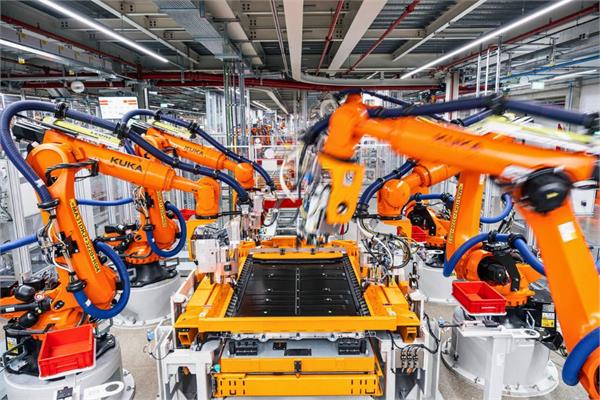
Audi’s Q6 e-tron is powered by sustainability and advanced coating technology, made possible through the Audi 360factory strategy.
Audi’s Ingolstadt plant (Germany) has been operating with net-zero emissions since 1st
January 2024, setting a benchmark in the automotive industry. The Q6 e-tron is also the first model to be built on Audi’s new Premium Platform Electric (PPE).
Sustainable surface coating
One of the standout innovations in Q6 e-tron production lies in Audi’s paint shop, where sustainability meets precision. The facility underwent extensive upgrades to meet the demands of the new electric models, including a crucial modification to the cathodic dip coating (CDC) process. A newly extended dryer ensures every vehicle body reaches the 160 °C curing temperature required for optimal coating adhesion and corrosion protection.
Moreover, automation has been significantly increased. Robots now apply adhesive pads to seal approximately 70 holes per body — a task previously done manually. These improvements not only raise energy efficiency but also boost quality and consistency in the coating process. An advanced surface inspection system enhances the reliability of the paint finish. Automated scanners assess each body for surface irregularities, feeding data to robotic grinders and polishers that perform finishing operations. Human technicians then inspect the results in real-time on large screens, ensuring Audi’s signature finish is delivered on every Q6 e-tron.
Battery and body production with a sustainable edge
The Q6 e-tron is also the first model series to benefit from Audi Ingolstadt’s new battery assembly facility. Spanning 30,000 m2 and staffed by 300 employees across three shifts, the site builds up to 1,000 high-voltage batteries daily, with nearly 90% automation. Powered entirely by green electricity, the facility marks another leap in Audi’s mission to reduce emissions while boosting flexibility.
Audi sources the electric motors for the Q6 e-tron from its carbon-neutral plant in Győr, Hungary. These are delivered via DB Cargo with zero emissions, further lowering the model’s production footprint.
Retooling existing facilities for electric mobility
The Ingolstadt plant leverages existing infrastructure to keep its environmental impact in check. The Q6 e-tron’s body is assembled in a repurposed space where over 600 robots and reused machines now support PPE production. More than 40 automated guided vehicles (AGVs) streamline the supply chain within the plant, delivering parts with pinpoint efficiency.
Audi’s flexible equipment concept extends to the press shop in Münchsmünster, where hot forming — a critical step in structural integrity and crash safety — has been enhanced. High-strength components such as A- and B-pillars are formed at 950 °C and cut using precision lasers. The same machinery can switch between producing parts for electric and combustion-engine models, yielding up to 20,000 parts daily.
With the production of the Q6 e-tron, Audi is not just building an electric vehicle — it is redefining how sustainable, high-quality vehicles are made. By rethinking everything from coating technologies to component logistics, Audi’s Ingolstadt facility is a prime example of how innovation and sustainability can go hand-in-hand.